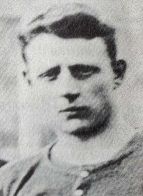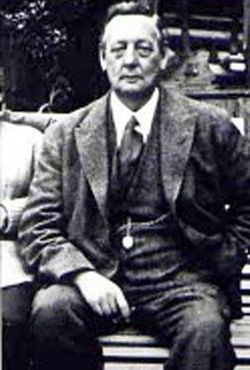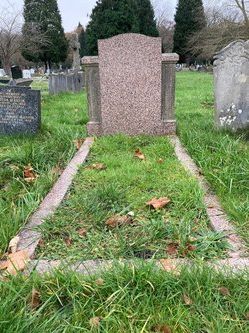Davie Calderhead

Given recent times at the club anyone who could stay in place as manager of Chelsea must have some thing about him. But Davie Calderhead did just that, from 1907 to 1933. And that was, as a player, after eleven seasons and the best part of three hundred appearances for Notts County. His position was centre-half but, seeing his on-field career had begun in 1881 it was not entirely as a defender. Rather from 1888, as his career Down South took off from the following season, he converted to the attacking, Scottish version.
Yet he must have had a hard side to him too. Before senior football swept him up in Dumfries he had been a miner there and presumably in Wishaw. In fact coal had been in his blood at birth, in 1864 at Holmes Colliery by Galston, the son of a hewer, but an itinerant one. In 1871 the family was in Riccarton, in 1891 in Cambusnethan.
But by then the young Calderhead had found his way to Dumfries and already played eight seasons, starting as a seventeen year-old, with Queens of the South Wanderers, the precursor of the present-day Queen of the South. The latter was only founded in 1919. The former had been dissolved in 1889, the same year Davie, having just won a first and only Scotland cap, had moved to Nottingham, with wife, Elizabeth Johnstone, from Stranraer, and a son and a daughter, both Dumfries-born.

And the family might have stayed in the English Midlands. In 1900 Calderhead became player and then secretary/manager at Lincoln City in the English Second Division but an FA Cup victory in 1906 over Chelsea, then in the same division but with far deeper pockets changed all that. For the start of the 1907-8 season he made the move to London, to a club now promoted to the First Division and it looked as if better would be sure to come.

Yet, the Calderhead years at Stamford Bridge were to be something of a roller-coaster. There were relegations in 1910 and 1924, promotions in 1911 and 1929 but never a position higher than fourth nor a Cup win. This was despite heavy-spending on players throughout, particularly dipping into the Scottish and Anglo-Scottish markets. And it was to be an eighteenth place finish in 1933, eighteen of twenty-two, that finally brought his reign to a close, at the age of sixty-seven. By then the family had been living for about twenty-five years at the same address, ironically within sight of Fulham's Craven Cottage. And it was there on Finlay St. five years later in 1938 Davie would die, to be buried not back in Scotland but across the river in Putney Vale Cemetery.
Birth Locator:
Residence Locations:
1871 - Riccarton Road, Riccarton
1881 - Cadgers Rd. (Now Cessnock Rd., Hurlford), Riccarton
1891 - 27, St. Peters Gate, Nottingham
1899 - 131, Kirk White St., Nottingham
1911 - The Black Boy Hotel, Nottingham
1918 - 42, Finlay St., Fulham, London
Death Locator:
1938 - 42, Finlay St., Fulham, London
Burial Locator:
Other Locations:
Stamford Bridge Stadium, Fulham Rd., London
Back to the Loudoun Trail
or the SFHG Home page